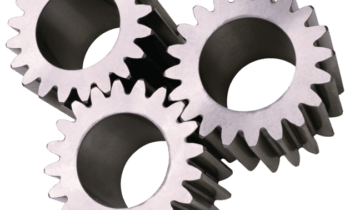When you hear the term small business, what comes to mind?
Do you imagine the small corner Mom and Pop Store? Maybe it’s the overworked service professional setting up a competitive business across the street from their old employer. It might even be the hobby enthusiast who has learned to turn their passion into profit!
And yes, these would all be a great analysis of a small business. Yet, Small businesses come in all shapes and sizes, but might not be as ‘small’ as you think. According to most statistics worldwide, small enterprises outnumber large companies by a wide margin, employ more people and often are responsible for driving innovation and competition in many economic sectors (more of this on part 2).
Small Business is Big Business because small companies have a big impact on society.
You can’t understand something until you define it.
 Most often, the definition of a business does not apply to an actual physical presence, popularity or even output of a company. This is because the definition of business size changes from country to country. However, the size of a business/enterprise is nearly always determined by the number of employees, the amount of income (receipts) and sometimes the assets of the company.
Most often, the definition of a business does not apply to an actual physical presence, popularity or even output of a company. This is because the definition of business size changes from country to country. However, the size of a business/enterprise is nearly always determined by the number of employees, the amount of income (receipts) and sometimes the assets of the company.
The common organizations categorizing business are Federal/State Governments, European Union, World Bank, United Nations, and the World Trade Organization. The most common term used is SME or SMB (small and medium enterprises/businesses).
Let’s look a few countries, to get a general view of business categorization.
United States:
The governing authority defining Small Business in the U.S. is the Small Business Administration. According to their website: The SBA, for most industries, defines a “small business” either in terms of the average number of employees over the past 12 months, or average annual receipts over the past three years.
To determine the actual business size, the SBA relies on the standards set by a coalition of U.S., Canada and Mexico called the NAICS. The North American Industry Classification System (NAICS) classifies business establishments for the purpose of collecting, analyzing, and publishing statistical data related to the U.S. economy.
Most often you will hear that the definition of a small business is basically anything under 500 employees or somewhere around 7.5 million in annual receipts. However, after looking over the NAICS classification list, I was amazed at how the classifications could change radically and fluctuate between gross receipts and the number of employees (but never both).
Definition of a small business varies in the NAICS. for example:
- A New Car Dealer is considered a small business - if it has fewer than 200 employees.
- A Used Car Dealer is considered a small business - if it has over 25 million in
- Average Annual Receipts (basically gross income).
- Pipeline Transporter of Crude – less than 1,500 employees
- Pipeline Transporter of Natural Gas - less than 27.5 million in annual receipts.
- A Men’s Clothing Store only has to make 11 Million
- A Women’s Clothing Store must make over 27.5 million.
- Dog and Cat Food Manufacturing - 1,000 employees.
- Other Animal Food Manufacturing - 500 employees.
- Auto-Tire Merchant Wholesalers - 200 employees
- Auto-Parts Merchant Wholesales - 100 employees
As you can see there is no set figure or number of employees that determines what is considered a small business
Canada
The Government of Canada has something called - Industry Canada, and it breaks down a business into 4 basic categories centered around the employee count.
1 to 4 employees: Micro-enterprise
5 to 100: Small business
101 to 499: Medium-sized business
500-plus: Large business
European Union
Figure from European Commission Website
- Small – Basically anything less than 50 employees, revenue under 10 million Euro or Balance sheet total of less than 10 million Euro
- Medium – Basically anything less than 250 employees, revenue under 50 million Euro or Balance sheet total of less than 43 million Euro.
- Large – Basically anything more than 250 employees, revenue over 50 million Euro.
China
China’s definition of an SME varies by industry, here are some examples: Taken from thebalance.com
| Industry | Staff headcount | Revenue (RMB) | Assets |
| Heavy Industry | < 1000 | ≤ 400 m | |
| Wholesale Trade | < 200 | ≤ 400 m | |
| Retail | < 300 | ≤ 200 m | |
| Transportation | < 1000 | ≤ 300 m | |
| Warehousing | < 200 | ≤ 300 m | |
| Accommodation | < 300 | ≤ 100 m | |
| Restaurant/Catering | < 300 | ≤ 100 m | |
| Software/IT | < 300 | ≤ 100 m | |
| Real Estate Development | ≤ 2 b | ≤ 100 m | |
| Information Transmission | < 2000 | ≤ 1 b |
As you can see, most of the definitions have to do with number of employees or revenue
Defining business size: Why is this important?
The reason governments categorize business is mostly due to taxation and regulation. It’s easier to track and even justify various regulations and tax rules if limits are set on the flow of people, money and goods sold. It also helps stabilize and protect the various business entities that function within that countries parameters.
On the opposite side, the categorization of companies also makes it easier to get away with unnecessary regulation or taxation. Especially, if you impersonalize the object you target. You know phrases like – ‘evil corporations’ ‘uncaring petroleum companies’, ‘unethical pharmaceutical practices’, and the ever-popular ‘greedy businessman’. Let’s not forget my favorite headline - ‘Big Box Retail Killing Off Mom and Pop Shop’
Now I’m not trying to say that these labels are always inaccurate, but they have been used too often to justify overbearing taxes and regulations.
In the end, we do need to place restraints on the size, scope, and practices of any business. This can prevent governments and businesses from getting too cozy and helps stop monopolistic practices. It also helps understand that small, medium and large businesses are different animals altogether, and need to be treated differently. Especially, since we want them to ‘play fairly’ within any given economy.
Stay tuned for Part 2: How big is small business?



